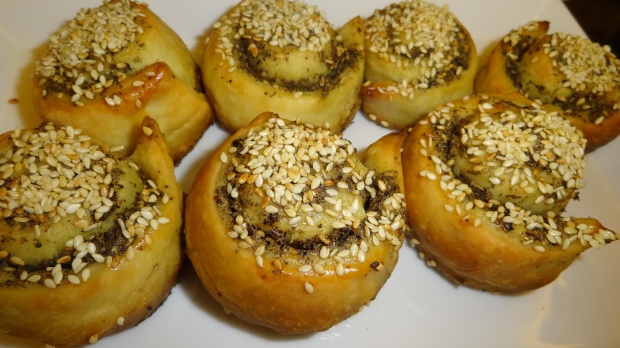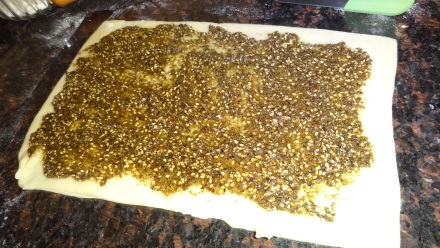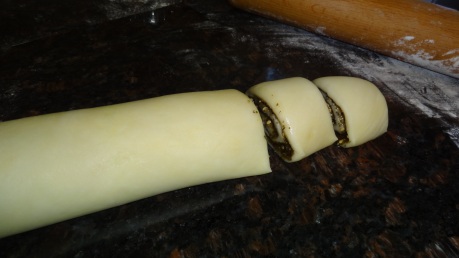
Hi dear followers,
I know it has been a long time since my last post. I’ve been travelling a lot between USA, AbuDhabi, Dubai and Lebanon to see my children.
Today I am back with this recipe of rolled Man’oushe, which melts in the mouth because the dough is so soft.
I hope you will like it as much as I enjoyed preparing for my loved ones.
Ingredients:
– 500 gs all purpose flour
– 1/2 cup corn oil, plus one tablespoon
-1 teaspoon salt
– 1 teaspoon sugar
– 1 1/2 teaspoon baking powder
– 1 teaspoon instant yeast
– 1 1/2 cup natural yoghurt
– 1 cup zaa’tar mixed with one cup olive oil
– Optional : Some milk and sesame for the decoration on the top of the roll
Preparation:
– In a bowl mix the flour with all the dried ingredients
– Add the corn oil and rub all the flour with oil
-Mix with 1/2 cup of yoghurt at a time until the mixture become a soft and smooth dough ( the quantity of the yoghurt may vary depending on the flour type)
– When your dough is ready rub it with one tablespoon of corn oil and cover with cling film and let it rest for about 2 hours until it doubles in volume

– Take a third of the dough and roll it using a rolling pin on a floured surface to a rectangle shape, pour the mixture of zaa’tar and oil and cover the dough leaving about one inch from each side and roll it into a cylinder
– Cut the rolled dough into a small pieces

– Preheat the oven to 190 degree
– Place each roll in cup cake tray and let it rest for about half an hour.
– If you are using sesame to decorate the top of the roll brush each one with a bit of milk and sprinkle the sesame over it
– Cook for 20 minutes, or until the top of the roll becomes golden color.
Et voila c’est tout…..Sahttein.






















